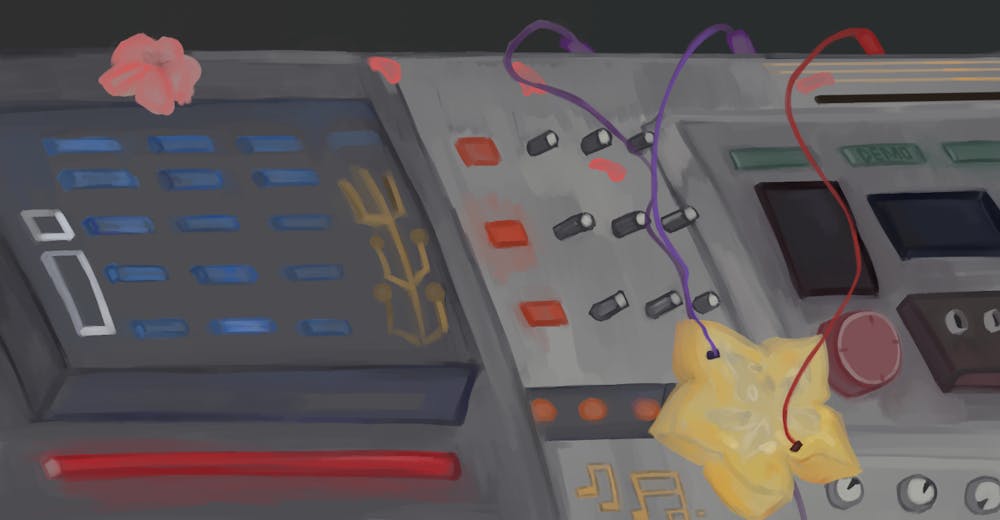Walking through campus, it’s easy to feel the shift beginning to take place. The weather is getting warmer, the sun is setting later, and the grays of winter are melting into mottled greens. Slowly but surely, spring is coming, and with it comes plants’ time to shine. Blooming flowers and the fresh green leaves will take center stage.
The scenery is beautiful, but for some, there’s more to these plants than just their looks. They’ve sought to answer the bizarre question: If plants could sing, what would it sound like?
From the low swooping vibrations of an Amanita muscaria mushroom to the high–pitched jumpy notes of a star fruit, musician and biologist Tarun Nayar brings these hidden voices to light. Under the stage name Modern Biology, Nayar has gained a large following and millions of views on TikTok by posting short clips of various plants producing sound. He uses a process called biodata sonification, where the natural rhythms of living organisms are converted into soundwaves. When connecting a synthesizer to various plants, the plant's bio–electric energy triggers different notes to play. The results of his experimentation are, well, a bit wonky. But, Nayar has found beauty in these weird beats, using them to create what he calls “organismic music.”
By combining these discovered sounds with a bit of music production, Nayar has created full–length songs. He’s produced multiple albums, including a holiday album centered around the Amanita muscaria mushroom and another inspired by Hawaiian vegetation. With the release of his most recent single “Aegean Sea” on Feb. 3, Nayar teased an upcoming album focused on the foliage of the Northern Gulf Islands.
Though Nayar’s music varies based on the plants used, all of his songs have a calming natural sound. The rhythms are organic and, at times, there’s no rhythm at all. At its core, the goal of Nayar’s music is to amplify the natural sounds of plants, no matter how strange they may be.
Music revolving around plants isn't some new hippy concept. In fact, plant music is an old hippy concept—dating back to the ‘70s. Peter Tompkins and Christopher Bird’s 1973 book The Secret Life of Plants popularized the idea of plant sentience as a whole, but more specifically that plants were receptive to music. Some readers criticized the work, describing The Secret Life of Plants as pseudoscience unsupported by any substantial scientific evidence. Others, however, took the notion of plants enjoying music to heart.
Canadian composer Mort Garson's 1976 album Mother Earth’s Plantasia was created with an audience of plants in mind. Between the subtitle “warm earth music for plants and the people who love them” and an album cover featuring a potted plant snuggled between figures holding hands, Garson’s intentions were clear. Garson created the album using a Moog synthesizer, which had only been invented a few years prior. Mother Earth’s Plantasia features a tracklist of ten songs, each one inspired by different plants. The music has a defined composition and feels like the soundtrack of a walk through a magical plant world. It’s a whimsical and beautiful listen—to humans and plants alike.
Mother Earth’s Plantasia received little commercial success when first released, due in large part to the fact that it was difficult to come by. A copy of the vinyl could only be obtained by either purchasing a houseplant from the Los Angeles store Mother Earth or a Simmons mattress from a Sears outlet. In the years after its initial release, the album gained a bit of an online following and in 2019, was re–released by Sacred Bones Record to a significantly more receptive audience. It has since gained status as a cult classic for both plant and music lovers, contributing to the popularization of plant music.
Through technological advances and works like Mother Earth’s Plantasia paving the way, Nayar and others like him have redefined the genre of plant music. It’s no longer just inspired by and created for plants; it gives them the leading voice. Plant music is certainly experimental and a bit out there, but it’s got charm and a whole lot of heart too.
So the next time you’re walking down Locust, don’t just stop to smell the roses. Listen to them too.







